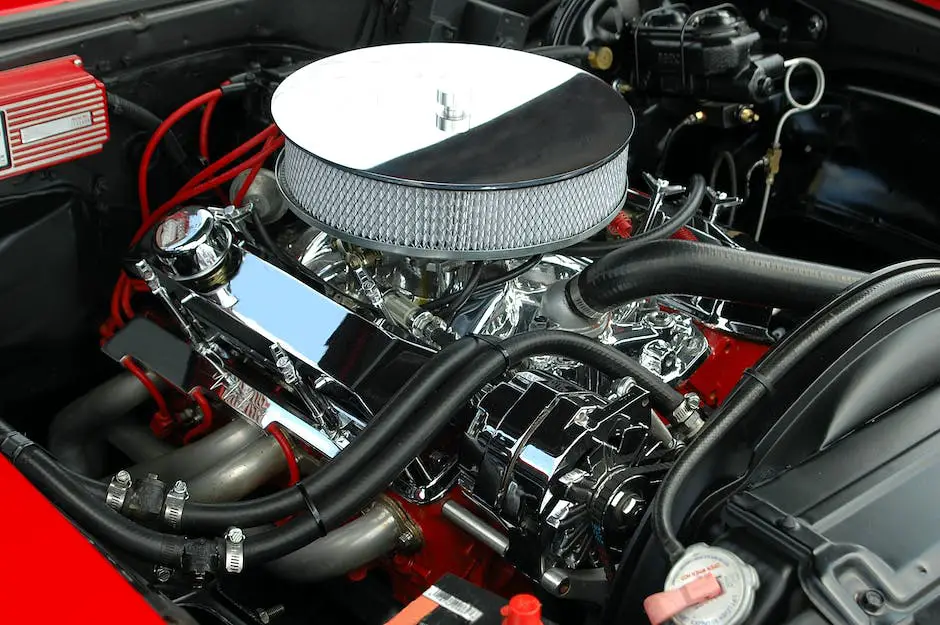At the heart of every modern automobile, lies a complex web of technology painstakingly designed to ensure optimum performance, safety and longevity of the vehicle. One such example is the Chevrolet Cruze, an automobile rich with sophisticated systems and controls. One integral component of this intricate system worthy of attention is the thermostat heater control circuit, associated with the diagnostic trouble code P0599. This code provides essential feedback on the functioning of the control circuit, detailing any faults that impact the vehicle’s performance. This essay deciphers Code P0599, explores the role of technology in diagnosing its faults and reviews the corrective measures and automated systems designed to resolve and prevent such issues. It also recognizes potential challenges faced in the rectification process and proposes solutions to overcome these obstacles.
Understanding Code P0599
Headline: Unveiling the Mysterious P0599 Error Code in Chevrolet Cruze Cars
Is your Chevrolet Cruze flashing the P0599 error code? There is no reason to panic! This might sound like a monumental problem, but understanding the problem and finding the fixing solutions can definitely save your day.
The P0599 error code signals an issue with the vehicle’s thermostat heater control circuit. Specific to your Chevrolet Cruze, it indicates the Engine Control Module (ECM) has detected a malfunction within this circuit. Essentially, the car struggles with a high voltage problem—a glitch in its lifeblood—that necessitates immediate attention.
Several causes can culminate in this error, tracing back to problems with the wiring, the engine coolant temperature sensor, or the thermostat itself. Damaged or burned wiring and connectors at the thermostat heater are typical culprits. Also, a mechanically stuck thermostat can lead to improper functioning and trigger the P0599 warning.
Wondering how you can be sure it is a P0599 issue? Several symptoms give it away. One telltale sign is poor fuel efficiency—your Chevrolet Cruze seems thirsty more often than usual. The car might also frequently go into “limp-home” mode, noticeably resist acceleration or overheat unexpectedly. An active Check Engine Light is also a strong hint pointing toward this issue.
Keeping these common symptoms in mind can significantly aid in swift problem detection. However, it is important to note that the absence of noticeable symptoms doesn’t mean that the system is working perfectly fine. Some cars might exhibit the P0599 error code even without any apparent symptoms, or the symptoms could be so subtle that they go unnoticed.
To diagnose and fix this error, professional tools are often needed to check the voltage at the thermostat heater. If voltage readings are within the standard range, the thermostat needs replacement. If not, this could indicate a problem elsewhere in the circuit—for example, burnt out wiring or connectors—which then need to be checked and replaced.
Fortunately, modern technology has paved the way for advanced diagnostic tools to detect such issues swiftly, saving time and effort. Manufacturers-issued scanners or multimeters are capable of providing accurate, precise readings and hence, suggesting the most appropriate solutions.
Rest assured, the P0599 is not a death sentence for your beloved Chevy Cruze, but neither is it a blinking light to be ignored. Detecting this error code early, and addressing it promptly and effectively, can redefine your driving experience and potentially prolong your vehicle’s lifespan.
Frequent self-checks, appropriate fixes, and high-tech assisted diagnostics all contribute to keeping your Chevy Cruze sailing smoothly on the road. Here’s to tech-savvy vehicle maintenance and hours of hassle-free driving!

Tech-aided Diagnosis
Beyond basic diagnosis and rectification, cutting-edge technology is crucial in detecting the P0599 fault code in the Chevrolet Cruze. This fault code can act as a cul-de-sac to seamless, efficient driving and must be identified promptly. Information technology, on the other hand, deftly steps in as a functional troubleshooter, signaling the need for corrective maintenance or part replacements.
Advancements in automotive technology, particularly On-Board Diagnostics (OBD) systems, have simplified the process of identifying this fault code. Modern OBD systems, such as OBD-II, have increasingly fine-tuned abilities to pinpoint P0599 and other fault code’s nature. By translating the car’s raw data into standardized diagnostic trouble codes (DTCs), they provide actionable insights regarding whatever is amiss in the car’s operational system.
Diagnostic tools like code readers and scan tools are tech-based gadgets that interface with the OBD-II system. When connected to the car’s OBD-II port, they’re able to decode the error messages relayed by the car’s computer system. Such tools are eminently valuable as they render the proverbially cryptic messages in the language of laymen.
Scan tools offer more comprehensive data, demonstrating real-time engine parameters alongside trouble codes, making them the go-to gadgets for advanced diagnostics. These tools can provide live data streams that accurately capture the health of various sensors, including the coolant temperature sensor and thermostat housing unit associated with the P0599 error code.
Furthermore, there’s the burgeoning trend of turning to artificial intelligence (AI) in tackling error messages. AI-based diagnostic tools are designed to tackle the faults that are more elusive and complicated. These tools can sift through an enormous database of error codes, remedy configurations, and their likelihood based on the vehicle’s make, model, and history. The adoption of these tech-powered tools can expedite the diagnostic process and reduce the turnaround time.
Mobile apps are another form of tech aid in diagnosing the P0599 fault code. Integrated with the vehicle’s operational system, they can monitor the car’s data in real-time. With the generated insights, the needful repairs can be anticipated and managed proactively, ensuring a glitch-free ride.
Bypassing low tech options can be a game-changer. The adoption of high-end diagnostic tools and AI-based tools allows for considerable granularity and detailed insights about the P0599 error code. The correct set of tools can make the cruise in a Chevy Cruze seamless, efficient, and enjoyable. As the tech world continues to flourish, the benefit of technology in addressing issues like the P0599 error code cannot be overstated. After all, a ride that’s smooth and worry-free is not just the need, but the demand of the day.

Corrective Measures & Automation
Technological advancements have indeed etched their mark on various spheres of human life, especially when it comes to automation in detecting and rectifying car faults. In the context of the P0599 error code prevalent in Chevrolet Cruze, technology plays a critical role in identifying, diagnosing, and rectifying the problem efficiently, and preventing its recurrence.
On-Board Diagnostics, or OBD systems, have revolutionized the auto repair industry. These systems, integrated into modern vehicles, are essentially a car’s self-diagnostic and reporting capability. When the P0599 error is flagged by the OBD, it implies an issue with the thermostat heater control circuit. And sophisticated diagnostic tools, such as code readers and scan tools, form the backbone of these OBD systems.
Specifically, scan tools go beyond just detecting the fault code. Conventional code readers may merely provide the error code, but scan tools offer comprehensive data about the vehicle’s engine, transmission, brakes, and emission systems. By providing a detailed snapshot of a vehicle’s health and ongoing issues, they allow for a better understanding of the underlying problem, making the rectification process more targeted and efficient.
Carrying this conversation into the future, the role of Artificial Intelligence (AI) in diagnosing complex fault codes such as the P0599 error cannot be overstated. AI tools, powered by machine learning algorithms, scrutinize the error data in a depth that surpasses human capability. They can identify patterns, predict possible issues before they turn severe, and suggest precise, remedial measures. This technological leap paves the way for proactive maintenance, contributing significantly to a smoother, safer driving experience.
Additionally, mobile apps integrated with the car’s operational system are an increasingly popular component of the tech-aided approach. They offer real-time monitoring and instant diagnosis, and facilitate prompt repairs. These user-friendly applications transform your smartphone into a sophisticated diagnostic tool, enabling you to receive immediate alerts when the OBD system flags an error. The convenience afforded by these apps helps in ensuring that the P0599, or any other error, is addressed as quickly as possible, ensuring minimal disruption.
To sum up, the role that technology plays in diagnosing, fixing, and preventing errors like the P0599 in Chevrolet Cruzes is nothing short of pivotal. Be it through advanced scan tools, AI-powered diagnostics, or mobile applications, it empowers car owners with real-time, in-depth knowledge about their vehicle’s health. With such advancements at hand, dealing with fault codes becomes much less daunting, paving the way for efficient, worry-free, and safe driving. Technology, with its pragmatic solutions, makes it unequivocally clear that proactive automotive care is the way forward.

Potential Challenges & Solutions
P0599 Error: High-Tech Mitigations and Solutions
Graced with the title of Most Valuable Automation Principle, the P0599 error diagnosis might be a painstaking affair without the arms of tech-savvy tools. While the error itself is born from a disruption in the thermostat heater control circuit, the real tech-related challenges stem from the dense forest of circuitry our modern vehicles harbor. Luckily, the blossom of technological advancement allows us to navigate through the maze of wires and chips and towards the crux of the problem.
The innovation of Vehicle Health Management (VHM) systems showcases the true power of technology in the automobile industry. A potent merger of sensors, software, and cloud-based modelling tech, the VHM systems relay a plethora of vehicle status and performance data. In the realm of P0599 Error, these systems strive to locate circuitry faults, monitor temperature levels, and identify abnormal alterations in electrical resistance – all focused on pinpointing and resolving the thermostat issue.
The bubble of error solving doesn’t burst at VHMs alone. Central to battling tech hurdles in post-P0599 scenarios are professional-grade OBD-II diagnostic scanners. Boasting capabilities far superior to conventional code readers, these devices ruthlessly cross-examine every component of your vehicle’s nervous system and turn up conclusive results about the state of the thermostat, and more.
Another innovative solution that emerges from automotive tech-wizardry is advanced thermal imaging technology. The tech delivers a live, radiometric image of the vehicle’s entire thermal signature, manifesting the problematic areas dealing with inconsistent thermal operation. Such an approach not only aids in understanding the severity of P0599 error but also helps orchestrate the appropriate steps for repair.
Revolutionizing the sphere of these challenges are Artificial Intelligence (AI) & Machine Learning (ML) technologies. By rationalizing and learning from a car’s historical data, AI and ML can predict potential P0599 occurrences, identifying the necessary mechanisms for prevention beforehand. Not only does this aid in hassle-free monitoring, but it enormously reduces the resolution time after a P0599 error emerges.
Moving at the speed of current technology, on-demand mobile apps available today integrate with your vehicle’s remote diagnostic systems, monitoring necessary parameters in real time. These apps become a digital companion, allowing drivers to react quickly to a P0599 error code warning and assess the severity of the issue. In case of specialty repairs, some apps even guide the user through a step-by-step visual or augmented reality instructions to fix the problem.
Remember, tech hurdles while dealing with the P0599 error may seem overwhelming. However, a keen understanding of the car’s intricate circuitry systems, armed with high-end diagnostic tools, the power of AI/ML, real-time monitoring apps, and a touch of that tech enthusiast spirit, will swiftly turn those mountains into molehills. Now there’s no need for a summary, as technology is your best weapon. Get out there, solve it, and ride on.

With the development in automotive technology, cars have become more than just vehicles for commuting; they have evolved into smart machines that alert drivers to potential issues before they become significant problems. This holds true for the Chevrolet Cruze and the sophistication it brings to the table, such as its automated systems and diagnostic tools like the OBD II scanner. Understanding the thermostat heater control circuit and Code P0599, its associated faults, and rectification processes are crucial steps towards ensuring the automobile’s optimum performance and longevity. Using modern technology and corrective measures, potential issues can be efficiently diagnosed and resolved, while potential challenges in the process can be overcome with intelligent, tech-oriented solutions. This continuous symbiosis between automobiles and technology assures us of more efficient, safer, and smarter vehicles in time to come.

Tomas is a retired Chevy Auto Technician that brings decades of hands-on experience and expertise to the table. He’s also a father to two incredible daughters. He enjoys using his knowledge and experience to help you solve and find reliable information on Chevrolet vehicles. Whether it’s troubleshooting engine problems or providing tips for maintenance, Thomas is committed to helping Chevy owners keep their vehicles running smoothly and safely.




